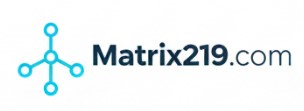Identity and Access Management (IAM) is a critical framework for organizations to secure sensitive data and control user access to essential systems. Implementing IAM improves security, streamlines administrative operations, and ensures regulatory compliance. In this article, we explore the significance of IAM, its key components, modern technologies, and best practices for effective implementation.
1. What is Identity and Access Management (IAM)?
IAM refers to policies and technologies used to manage user identities and regulate access to resources. It ensures that the right individuals have the appropriate access to the right resources at the right time for valid reasons.
2. Importance of IAM
IAM plays a crucial role in security and operational efficiency:
- Enhanced Security: Controls access to sensitive resources, minimizing the risk of breaches.
- Risk Reduction: Monitors and detects suspicious activities to prevent unauthorized access.
- Regulatory Compliance: Helps organizations meet legal security standards and avoid penalties.
- Operational Efficiency: Automates identity management, reducing administrative workload.
- Improved User Experience: Simplifies access while maintaining security.
- User Lifecycle Management: Ensures timely creation and removal of user accounts.
- Remote Access Support: Enables secure access for remote and mobile users.
- Centralized Management: Provides a unified platform for identity and permission management.
3. Key Components of IAM
IAM comprises various essential elements:
- Identity Verification: Uses passwords, two-factor authentication (2FA), and biometrics.
- Access Management: Defines roles and permissions based on user responsibilities.
- Access Monitoring: Tracks and analyzes login attempts for security breaches.
4. Modern IAM Technologies
Innovative IAM solutions enhance security through:
- Multi-Factor Authentication (MFA): Adds extra verification layers for secure access.
- Single Sign-On (SSO): Allows users to access multiple applications with one set of credentials.
- Identity Lifecycle Management (ILM): Manages user accounts from creation to deactivation.
5. Best Practices for IAM Implementation
To maximize IAM effectiveness, organizations should:
- Assess Risks: Identify security vulnerabilities and implement risk mitigation strategies.
- Regularly Update Policies: Keep IAM policies up to date with evolving threats.
- Train Employees: Educate staff on IAM importance and proper security practices.
Conclusion
Identity and Access Management (IAM) is a cornerstone of cybersecurity strategies. By adopting best practices and leveraging advanced IAM technologies, organizations can strengthen security, ensure compliance, and safeguard sensitive information from cyber threats.
Source:
For more details, read the original article on Matrix219.Net
